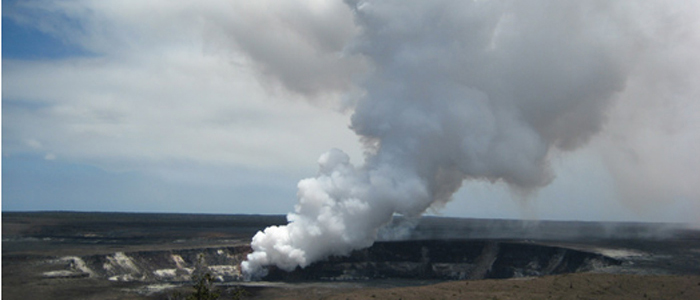
Recommendations for Catchment Users
Due to Increased Volcanic Activity
If you live downwind, minimize ash and debris in your catchment water by taking the following steps:
-
Temporarily disconnect your catchment system from the roof until rain has flushed your roof and any ash deposits. Don't reconnect the system until the deposits are washed off the roof and out of your gutters.
-
Check your gutters, especially if they do not slope, as ash may collect in them. Clean out any ash deposits in the gutters to keep water from mixing with the ash and leaching metals into the catchment water.
-
Use a free-standing or self-supporting canopy to cover mesh tank covers so less debris will get in.
-
If you do not have a first-flush device, consider disconnecting your downspout from the tank until the roof has had a chance to wash off, then reconnect to catch the cleaner rain.
- Dissolve 1-2 boxes of baking soda in water and add it to your tank every 2-4 weeks to raise the pH of the water. This prevents copper and lead from leaching from pipes and fixtures into your water. You can also purchase filters to remove lead and copper.
- Check all water filters regularly to make sure that they can still filter out debris. Keep extra sediment filters on hand for heavy ash fall.
- Pre-tank filters help keep out larger insoluble debris. you might secure a nylon stocking to the end of the downspout (where it goes into the tank) to collect debris. Be sure the stocking is very secure because the weight of the debris and the force of the water will knock off a stocking that is merely tied on.
These measures will help your water stay cleaner, which keeps you in better health. For more information or questions, please call us at 808-981-5199 or send email.
MORE About ACID RAIN and What You Can Do:
- Why does acid rain matter?
- Is acid rain a health hazard?
- How do I raise the pH levels in my catchment tank?
- Click here to learn more about Acid Rain.
Emergency water spigots
Please note: Emergency water spigots have been established throughout the island. If you believe the quality of your catchment water is questionable, use these spigots established by the Department of Water Supply for your drinking and cooking needs.
Emergency Preparedness
For other information on emergency preparedness, please visit:
- County of Hawai`i's Civil Defense information website at www.lavainfo.us
- Center for the Study of Active Volcanoes at http://www.uhh.hawaii.edu/~nat_haz/
